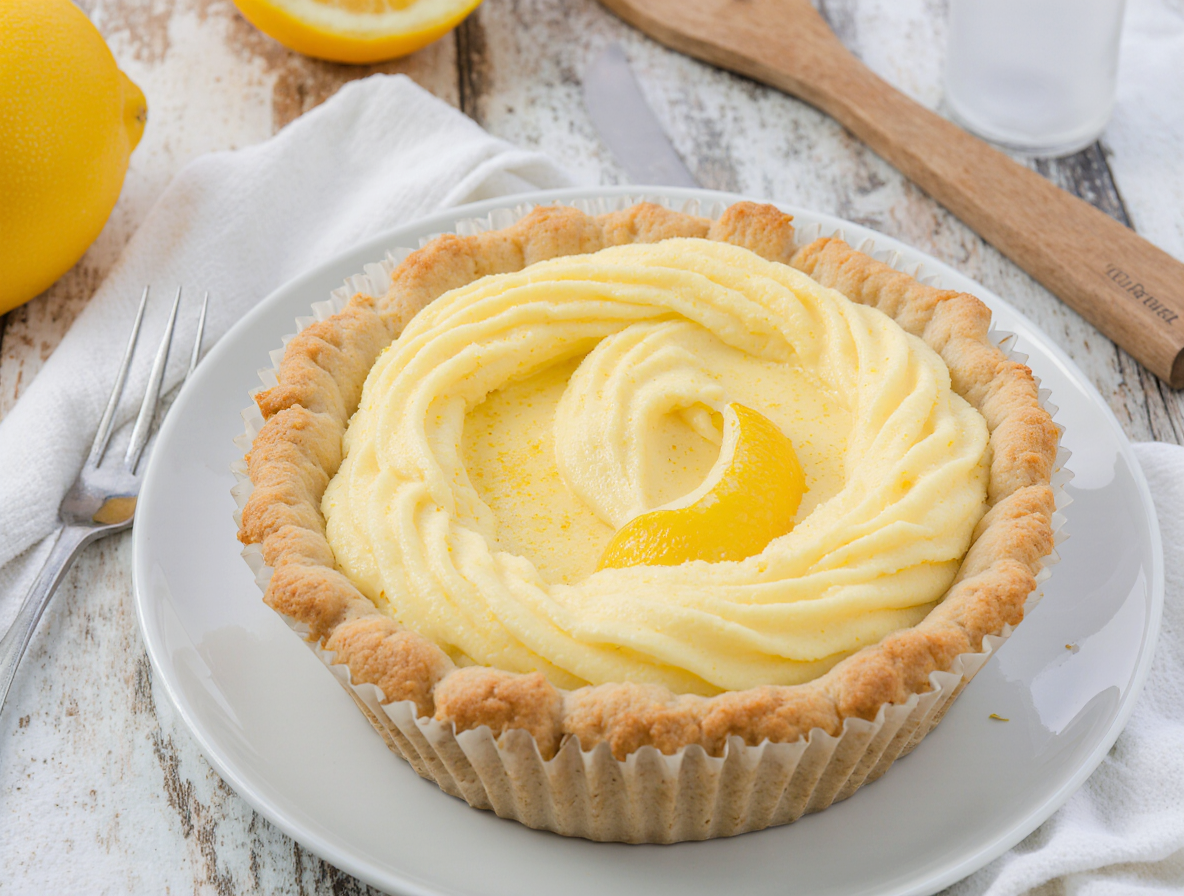The Secret to Perfect Impossible Lemon Pie: A Foolproof Recipe Guide
Have you ever heard of impossible lemon pie? This magical dessert surprisingly creates its own crust while baking, making it one of the most fascinating treats I’ve discovered in my baking journey. Taking just 5-10 minutes of prep time, these crustless lemon custard pies look incredibly impressive and fancy despite requiring minimal effort.
Besides being quick to prepare, impossible lemon pie recipes offer versatility that few desserts can match. Whether you prefer making individual baby lemon impossible pies that bake in about 25-45 minutes[-3] or a full-sized version, the result is essentially the same – a delicious dessert with a magic custard filling that forms its own crust as it bakes. Moreover, these treats are perfectly suited for spring celebrations or even a cozy weekday treat. In this guide, I’ll walk you through everything you need to know about creating perfect impossible lemon pies, including variations, troubleshooting tips, and the science behind what makes them truly “impossible.”
What Makes an Impossible Lemon Pie ‘Impossible’
The magic of an impossible lemon pie lives up to its curious name through a fascinating scientific process. This vintage treat, which gained popularity when Bisquick released its line of impossible pies in the 1970s, earned its name because it seems impossible that a pie can form its own crust without any special technique.
The science behind the self-forming crust
The fundamental principle behind impossible lemon pie is density. Just as gold sinks in water because it’s more dense, the ingredients in this pie settle according to their mass per unit volume. When all ingredients are mixed together and baked, the flour—being heavier—naturally settles at the bottom of the pan, creating a soft crust-like base. Some recipes refer to this as a “density pie” because it perfectly demonstrates how materials organize themselves according to their weight.
Initially introduced as a convenience food, impossible pie requires just one bowl where ingredients are whisked together, poured into a pie pan, and transformed in the oven. The name isn’t because it’s difficult to make—quite the opposite! It’s called “impossible” because it’s practically impossible to mess up.
How the layers separate during baking
During baking, something truly remarkable happens: the batter magically separates into distinct layers. The flour settles to form a bottom crust with a texture similar to pastry. Simultaneously, the middle becomes custardy, while coconut (if included) rises to the surface, forming a crisp top layer that gets slightly golden and more cake-like.
This self-separation creates three distinct textures:
- A soft crust-like base at the bottom
- A smooth custard center in the middle
- A golden-brown top layer that gives it old-fashioned charm
It’s completely normal for impossible pies to sink slightly in the center as they cool, creating a perfect little well for extra powdered sugar or a dollop of whipped cream.
Why condensed milk is key to the texture
Sweetened condensed milk plays a crucial role in impossible lemon pie recipes. It does more than simply add sweetness—it’s the key to achieving that luscious, spoonable filling. The thick, sweet nature of condensed milk combines beautifully with fresh lemon juice, gently curdling into a custard that sets without fuss.
Additionally, the balance between sweetened condensed milk and acidic lemon juice creates the magic that makes these pies so special. This interaction helps form that creamy, velvety texture that impossible pies are known for, ensuring each bite bursts with rich lemon flavor. Furthermore, unlike traditional pies requiring separate crusts, impossible pies with condensed milk create that perfect custard-like base while allowing the crust to form naturally on top.
Step-by-Step: Foolproof Impossible Lemon Pie Recipe
Now that we understand the science, let’s roll up our sleeves and make this magic happen in your kitchen. Creating an impossible lemon pie requires minimal effort yet yields impressive results, making it perfect for both beginners and seasoned bakers alike.
1. Gather your ingredients
First, collect everything you’ll need for your impossible lemon pie:
- 4 large eggs
- 1¾ cups milk (or 2 cups for some recipes)
- ½ cup all-purpose flour[132]
- ⅔-¾ cup sugar[132]
- 6-8 tablespoons melted butter[132]
- 1-2 tablespoons lemon juice
- 1-2 teaspoons lemon zest
- 1 teaspoon vanilla extract[132]
- Optional: 1 cup sweetened flaked coconut[132]
For those preferring condensed milk versions, substitute the regular milk and sugar with one 14-ounce can of sweetened condensed milk.
2. Mix the wet and dry components separately
To prevent lumps in your batter, it’s best to organize your ingredients before mixing. Consequently, start by melting your butter and allowing it to cool slightly. In one bowl, combine eggs, milk, melted butter, lemon juice, and vanilla extract. Then, in a separate bowl, mix flour, sugar, lemon zest, and salt (if using).
3. Combine and whisk to a smooth batter
Once your components are ready, gradually add the dry ingredients to the wet mixture. Mix until just combined—either using a blender for 15 seconds, a hand whisk, or even a food processor. The key is not to overmix, as this could make your pie dense.
4. Pour and portion into muffin tins or pie dish
You have two wonderful options: a traditional pie or individual servings. For a pie, grease a 9-inch pie plate generously. For mini versions, either line a muffin tin with cupcake liners or grease the tin directly. Fill muffin cups about ¾ full to allow room for rising.
5. Bake at the right temperature and time
Preheat your oven to 350°F (175°C) before you begin mixing. For a full-sized pie, bake for approximately 45-60 minutes. Mini versions require only 20-25 minutes. Your impossible lemon pie is done when the center is firm with a slight wobble and the top is golden brown.
Tips to Avoid Common Mistakes
Even experienced bakers face challenges with impossible lemon pie. Let me share some critical tips to ensure your pie turns out perfectly every time.
Don’t skip the lemon zest
The delicate, fragrant flavors of citrus come from oils highly concentrated in the zest. Particularly important, the zest provides that intense lemon flavor that bottled juice lacks. Although some recipes suggest substitutes, nothing beats the flavor and aroma of fresh zest. One baker noted that when her sister forgot the zest, the pies still tasted good but lacked that special punch of lemon flavor.
Avoid overmixing the batter
Overmixing can lead to a dense, rubbery texture instead of the light, fluffy result you want. First of all, add eggs one at a time for a smoother batter that bakes evenly. Also, when adding lemon juice, pour it in slowly while whisking constantly to prevent the acidity from curdling the milk.
How to tell when the pie is done
Your impossible lemon pie is ready when:
- The edges are lightly golden
- A toothpick inserted into the center comes out clean
- The center has a slight wobble
Cooling and unmolding without breaking
Let the pie cool completely before removing from the tin. Ideally, chill overnight so it sets properly for slicing.
Why your pie might sink in the middle
Rest assured, it’s completely normal for impossible pies to sink slightly in the center as they cool. This creates a perfect little well for powdered sugar or whipped cream!
Creative Variations to Try
The classic impossible lemon pie recipe offers a wonderful foundation for creative experimentation. Once you’ve mastered the basic version, try these delightful variations to expand your impossible pie repertoire.
Lime or orange instead of lemon
For a refreshing twist, substitute lime or orange for lemon in equal amounts. Lime creates a more tangy profile similar to key lime pie. Typically, you’ll need two limes to replace the juice and zest from one lemon. Orange zest and juice offer a sweeter, less tart alternative that works beautifully with the custard base.
Impossible lemon pie without coconut
Not everyone enjoys coconut texture or flavor. Fortunately, you can make a coconut-free version by following the standard recipe but omitting the coconut entirely. For best results with coconut-free versions, reduce the butter to half the original amount to maintain proper consistency.
Add-ins: berries, coconut, or graham crust
Enhance your impossible pie with creative add-ins. Fold fresh blueberries or diced strawberries into the batter before baking. For texture, mix in shredded coconut. Create a crunchier base by pressing crushed graham crackers into the bottom of your pan prior to adding the batter. Some bakers even sprinkle coarse sugar on top before baking for a delightful crackly finish.
Mini vs. full-size pie options
Both mini and full-sized versions deliver the same magical results. Mini pies bake faster (about 20-25 minutes) and make perfect snacks—ideal for popping into your mouth as an afternoon treat. They’re excellent for parties or when you want variety without making multiple full pies.
Using lemon curd for extra richness
For the ultimate lemon experience, incorporate lemon curd. Either swirl it into the batter before baking or fold it into whipped cream to create a luscious topping. The condensed milk and lemon curd combination makes these pies extraordinarily moist.
Conclusion
Impossible lemon pie truly lives up to its magical reputation through its scientific wonder of creating its own crust while baking. After trying this recipe, you’ll undoubtedly understand why it remains a beloved dessert since its Bisquick-inspired origins in the 1970s. This dessert stands out because of its simplicity—just one bowl, minimal ingredients, and barely any prep time required.
The beauty of impossible lemon pie also lies in its adaptability. Whether you prefer individual servings or a full-sized pie, the results deliver that same delightful three-layer texture experience. Furthermore, the variations are endless—swap lemons for limes or oranges, add fresh berries, include or omit coconut, or even enhance the richness with lemon curd.
Remember that certain elements make this pie special. Fresh lemon zest provides that essential citrus punch, while condensed milk creates the luscious, spoonable filling texture. Though your pie might sink slightly in the middle as it cools, this simply creates the perfect spot for a dollop of whipped cream or a dusting of powdered sugar.
My personal favorite aspect of impossible lemon pie remains its foolproof nature. The ingredients know exactly what to do in the oven, separating according to density without any special technique from you. This makes it perfect for both beginner bakers looking for an impressive dessert and experienced bakers wanting something delicious without the fuss.
Give this magical dessert a try—your friends and family will certainly be amazed when you reveal the “impossible” secret behind this delightful lemon treat!
FAQs
Q1. What makes an Impossible Lemon Pie “impossible”? The pie is called “impossible” because it magically forms its own crust while baking. The ingredients separate based on density, with flour settling at the bottom to create a crust-like base, while the middle becomes custardy and the top forms a golden layer.
Q2. How long does it take to prepare and bake an Impossible Lemon Pie? Preparation time is typically 5-10 minutes. Baking time varies: a full-sized pie takes about 45-60 minutes, while mini versions bake in 20-25 minutes at 350°F (175°C).
Q3. Can I make Impossible Lemon Pie without coconut? Yes, you can omit coconut from the recipe. When making a coconut-free version, it’s recommended to reduce the amount of butter by half to maintain the proper consistency.
Q4. How do I know when my Impossible Lemon Pie is done baking? The pie is ready when the edges are lightly golden, a toothpick inserted into the center comes out clean, and the center has a slight wobble. It’s normal for the pie to sink slightly in the middle as it cools.
Q5. Can I use other citrus fruits instead of lemon in this recipe? Absolutely! You can substitute lime or orange for lemon in equal amounts. Lime will create a more tangy profile, while orange offers a sweeter alternative. Generally, you’ll need two limes to replace the juice and zest from one lemon.


